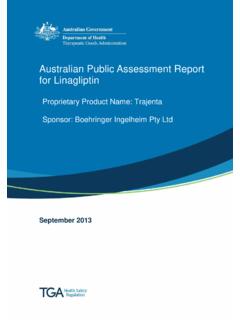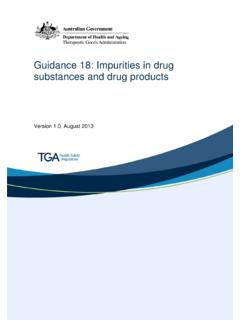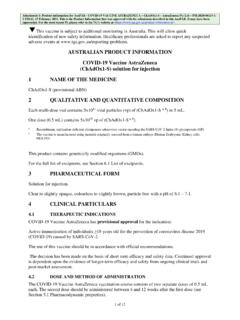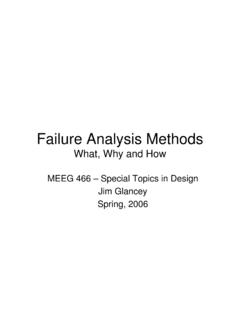Transcription of Guide to Good Manufacturing Practice for Medicinal ...
1 PHARMACEUTICAL INSPECTION CONVENTION PHARMACEUTICAL INSPECTION CO-OPERATION SCHEME PE 009-14 (Annexes) 1 July 2018 PE 009-14 (Annexes) 1 July 2018 Guide TO good Manufacturing Practice FOR Medicinal PRODUCTS ANNEXES PIC/S July 2018 Reproduction prohibited for commercial purposes. Reproduction for internal use is authorised, provided that the source is acknowledged. Editor: PIC/S Secretariat 14 rue du Roveray CH-1207 Geneva e- mail: web site: Table of contents PE 009-14 (Annexes) -i- 1 July 2018 ANNEXES Annex 1 (Manufacture of sterile Medicinal products) 1 Principle 1 General 1 Clean room and clean air device classification 2 Clean room and clean air device monitoring 3 Isolator technology 5 Blow/fill/seal technology 6 Terminally sterilised products 6 Aseptic preparation 7 Personnel 7 Premises 8 Equipment 10 Sanitation 10 Processing 10 Sterilisation 13 Sterilisation by heat 13 Moist heat 14 Dry heat 14 Sterilisation by radiation 14 Sterilisation with ethylene oxide 15 Filtration of Medicinal products which cannot be sterilised in their final container 16 Finishing of sterile products 16 Quality control 17 Annex 2 (Manufacture of biological Medicinal substances and products for human use) 19 Scope 19 Principle 22 Part A.
2 General guidance 23 Personnel 23 Premise and equipment 23 Animals 26 Documentation 27 Production 28 Quality control 34 Part B. Specific guidance on selected product types 35 Glossary 42 Annex 3 ( Manufacture of radiopharmaceuticals) 46 Principle 46 Introduction 46 Quality assurance 47 Personnel 48 Premises and equipment 48 Documentation 50 Production 50 Quality control 51 Reference and retention samples 52 Distribution 52 Glossary 52 Table of contents PE 009-14 (Annexes) -ii- 1 July 2018 Annex 4 (Manufacture of veterinary Medicinal products other than immunologicals) 53 Manufacture of premixes for medicated feeding stuffs 53 The manufacture of ectoparasiticides 54 The manufacture of veterinary Medicinal products containing penicillins 54 Retention of samples 54 Sterile veterinary Medicinal products 54 Annex 5 (Manufacture of immunological veterinary medical products)
3 55 Principle 55 Personnel 55 Premises 56 Equipment 59 Animals and animal houses 60 Disinfection Waste disposal 60 Production 61 Starting materials 61 Quality control 64 Annex 6 (Manufacture of Medicinal gases) 65 Principle 65 Manufacture of active substance gases 65 Manufacture of Medicinal gases 66 Personnel 66 Premises and equipment 67 Documentation 68 Production 69 Quality control 72 Transportation of packaged gases 73 Glossary 74 Annex 7 (Manufacture of herbal Medicinal products) 76 Principle 76 Premises 78 Storage areas 78 Production area 78 Equipment 78 Documentation 78 Specifications for starting materials 78 Processing instructions 80 Quality Control 80 Annex 8 (Sampling of starting and packaging materials) 81 Principle 81 Personnel 81 Starting materials 81 Packaging material 82 Annex 9 ( Manufacture of liquids, creams and ointments) 83 Principle 83 Premises and equipment 83 Production 83 Table of contents PE 009-14 (Annexes) -iii- 1 July 2018 Annex 10 (Manufacture of pressurised metered dose aerosol preparations for inhalation) 85 Principle 85 General 85 Premises and equipment 85 Production and quality control 86 Annex 11 (Computerised systems) 87 Principle 87 General 87 Risk management 87 Personnel 87 Suppliers and service providers 87 Project phase 88 Validation 88 Operational phase 89 Data 89 Accuracy checks 89 Data storage 89 Printouts 89 Audit trails 89 Change and configuration management 89 Periodic evaluation 89 Security 90 Incident management 90 Electronic signature 90 Batch release 90 Business continuity 90 Archiving 91 Glossary 91 Annex 12 (Use of ionising radiation in the manufacture of Medicinal products)
4 92 Introduction 92 Responsibilities 92 Dosimetry 93 Validation of the process 93 Commissioning of the plant 94 General 94 Gamma irradiators 94 Electron beam irradiators 95 Premises 96 Processing 96 Gamma irradiators 97 Electron beam irradiators 97 Documentation 98 Microbiological monitoring 98 Annex 13 (Manufacture of investigational Medicinal products) 99 Principle 99 Glossary 100 Quality management 102 Personnel 102 Table of contents PE 009-14 (Annexes) -iv- 1 July 2018 Premises and equipment 103 Documentation 103 Specifications and instructions 103 Order 103 Product specification file 103 Manufacturing formulae and processing instructions 104 Packaging instructions 104 Processing, testing and packaging batch records 104 Production 104 Packaging materials 104 Manufacturing operations 105 Principles applicable to comparator product 105 Blinding operations 105 Randomisation code 106 Packaging 106 Labelling 106 Quality control 108 Release of batches 109 Shipping 111 Complaints 111 Recalls and returns 111 Recalls 111 Returns 112 Destruction 112 Annex 14 (Manufacture of Medicinal products derived from human blood or plasma)
5 114 Glossary 114 Scope 116 Principles 116 Quality management 118 Traceability and post collection measures 119 Premises and equipment 121 Manufacturing 121 Quality control 123 Release of intermediate and finished products 124 Retention of plasma pool samples 124 Disposal of waste 124 Addendum 124 Annex 15 (Qualification and validation) 128 Principle 128 General 128 Organising and Planning for Qualification and Validation 128 Documentation, including VMP 129 Qualification Stages for Equipment, Facilities and Systems 130 Re-qualification 132 Process Validation 132 Verification of Transportation 136 Validation of Packaging 137 Qualification of Utilities 137 Validation of Test Methods 137 Cleaning Validation 138 Table of contents PE 009-14 (Annexes) -v- 1 July 2018 Change Control 139 Glossary 140 Annex 16 [Qualified person and batch release] 144 Annex 17 (Real Time Release Testing and Parametric Release) 145 Principle 145 Scope 145 Real Time Release Testing (RTRT) 145 Parametric Release and Sterilisation 147 Glossary 149 Annex 18 [GMP Guide for active pharmaceutical ingredients]** 151 Annex 19 (Reference and retention samples) 152 Scope 152 Principle 152 Duration of storage 153 Size of reference and retention samples 153 Storage conditions 154 Written agreements 154 Reference samples General points 154 Retention samples General points 155 Reference and retention samples for parallel imported / parallel distributed products 155 Reference and retention samples in the case of closedown of a manufacturer 155 Annex 20 (Quality risk management)
6 ** 157 Foreword and scope of application 157 Introduction 157 Scope 159 Principles of quality risk management 159 General quality risk management process 159 Responsibilities 160 Initiating a quality risk management process 161 Risk assessment 161 Risk control 162 Risk communication 163 Risk review 163 Risk management methodology 163 Integration of quality risk management into industry and regulatory operations 164 Definitions 165 References 167 This Annex is specific to the EU GMP Guide and has not been adopted by PIC/S. ** The EU first adopted the ICH GMP Guide on APIs as Annex 18 to the EU GMP Guide while PIC/S adopted it as a stand-alone GMP Guide (PE 007). The Guide has now been adopted as Part II of the PIC/S GMP Guide (see PE 009 (Part II)). ** This Annex is voluntary. Table of contents PE 009-14 (Annexes) -vi- 1 July 2018 Appendix I: Risk Management Methods and Tools 168 Basic Risk Management Facilitation Methods 168 failure Mode Effects analysis (FMEA) 168 Potential Areas of Use(s) 168 failure Mode, Effects and Criticality analysis (FMECA) 168 fault tree analysis (FTA) 169 Hazard analysis and Critical Control Points (HACCP) 169 Hazard Operability analysis (HAZOP) 170 Preliminary Hazard analysis (PHA) 170 Risk Ranking and Filtering 171 Supporting Statistical Tools 171 Appendix II.
7 Potential Applications For Quality Risk Management 172 Quality Risk Management as Part of Integrated Quality Management 172 Quality Risk Management as Part of Regulatory Operations 173 Quality Risk Management as Part of Development 174 Quality Risk Management for Facilities, Equipment and Utilities 174 Quality Risk Management as Part of Materials Management 175 Quality Risk Management as Part of Production 176 Quality Risk Management as Part of Laboratory Control and Stability Studies 177 Quality Risk Management as Part of Packaging and Labelling 177 GLOSSARY 178 Annex 1 Manufacture of sterile Medicinal products PE 009-14 (Annexes) -1- 1 July 2018 ANNEX 1 MANUFACTURE OF STERILE Medicinal PRODUCTS PRINCIPLE The manufacture of sterile products is subject to special requirements in order to minimise risks of microbiological contamination, and of particulate and pyrogen contamination.
8 Much depends on the skill, training and attitudes of the personnel involved. Quality Assurance is particularly important, and this type of manufacture must strictly follow carefully established and validated methods of preparation and procedure. Sole reliance for sterility or other quality aspects must not be placed on any terminal process or finished product test. Note: This guidance does not lay down detailed methods for determining the microbiological and particulate cleanliness of air, surfaces, etc. Reference should be made to other documents such as the EN/ISO Standards. GENERAL 1. The manufacture of sterile products should be carried out in clean areas entry to which should be through airlocks for personnel and/or for equipment and materials. Clean areas should be maintained to an appropriate cleanliness standard and supplied with air which has passed through filters of an appropriate efficiency.
9 2. The various operations of component preparation, product preparation and filling should be carried out in separate areas within the clean area. Manufacturing operations are divided into two categories; firstly those where the product is terminally sterilised, and secondly those which are conducted aseptically at some or all stages. 3. Clean areas for the manufacture of sterile products are classified according to the required characteristics of the environment. Each Manufacturing operation requires an appropriate environmental cleanliness level in the operational state in order to minimise the risks of particulate or microbial contamination of the product or materials being handled. In order to meet in operation conditions these areas should be designed to reach certain specified air-cleanliness levels in the at rest occupancy state.
10 The at rest state is the condition where the installation is installed and operating, complete with production equipment but with no operating personnel present. The in operation state is the condition where the installation is functioning in the defined operating mode with the specified number of personnel working. Annex 1 Manufacture of sterile Medicinal products PE 009-14 (Annexes) -2- 1 July 2018 The in operation and at rest states should be defined for each clean room or suite of clean rooms. For the manufacture of sterile Medicinal products 4 grades can be distinguished. Grade A: The local zone for high risk operations, filling zone, stopper bowls, open ampoules and vials, making aseptic connections. Normally such conditions are provided by a laminar air flow work station.












